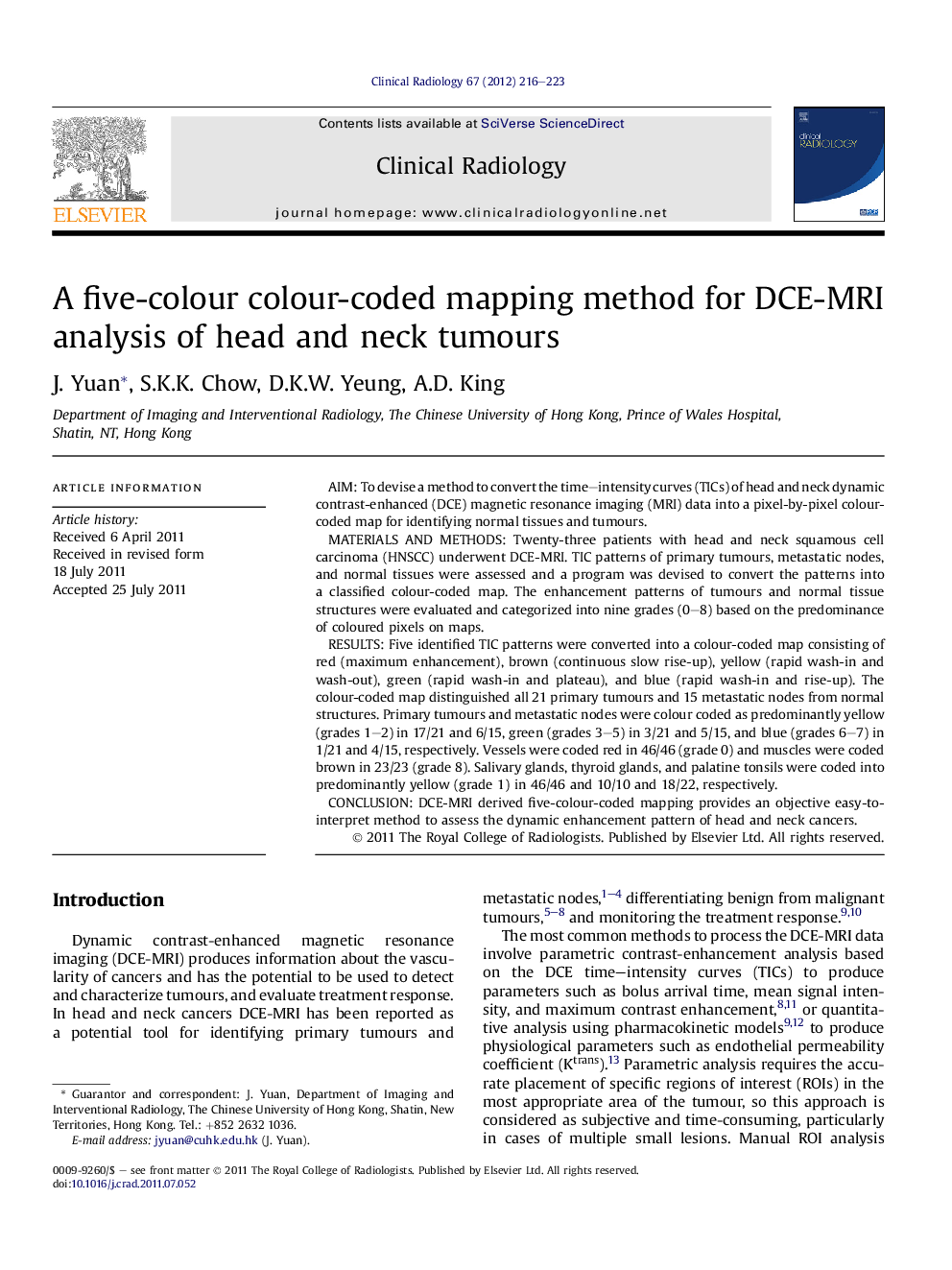| Article ID | Journal | Published Year | Pages | File Type |
|---|---|---|---|---|
| 3981684 | Clinical Radiology | 2012 | 8 Pages |
AimTo devise a method to convert the time–intensity curves (TICs) of head and neck dynamic contrast-enhanced (DCE) magnetic resonance imaging (MRI) data into a pixel-by-pixel colour-coded map for identifying normal tissues and tumours.Materials and methodsTwenty-three patients with head and neck squamous cell carcinoma (HNSCC) underwent DCE-MRI. TIC patterns of primary tumours, metastatic nodes, and normal tissues were assessed and a program was devised to convert the patterns into a classified colour-coded map. The enhancement patterns of tumours and normal tissue structures were evaluated and categorized into nine grades (0–8) based on the predominance of coloured pixels on maps.ResultsFive identified TIC patterns were converted into a colour-coded map consisting of red (maximum enhancement), brown (continuous slow rise-up), yellow (rapid wash-in and wash-out), green (rapid wash-in and plateau), and blue (rapid wash-in and rise-up). The colour-coded map distinguished all 21 primary tumours and 15 metastatic nodes from normal structures. Primary tumours and metastatic nodes were colour coded as predominantly yellow (grades 1–2) in 17/21 and 6/15, green (grades 3–5) in 3/21 and 5/15, and blue (grades 6–7) in 1/21 and 4/15, respectively. Vessels were coded red in 46/46 (grade 0) and muscles were coded brown in 23/23 (grade 8). Salivary glands, thyroid glands, and palatine tonsils were coded into predominantly yellow (grade 1) in 46/46 and 10/10 and 18/22, respectively.ConclusionDCE-MRI derived five-colour-coded mapping provides an objective easy-to-interpret method to assess the dynamic enhancement pattern of head and neck cancers.
